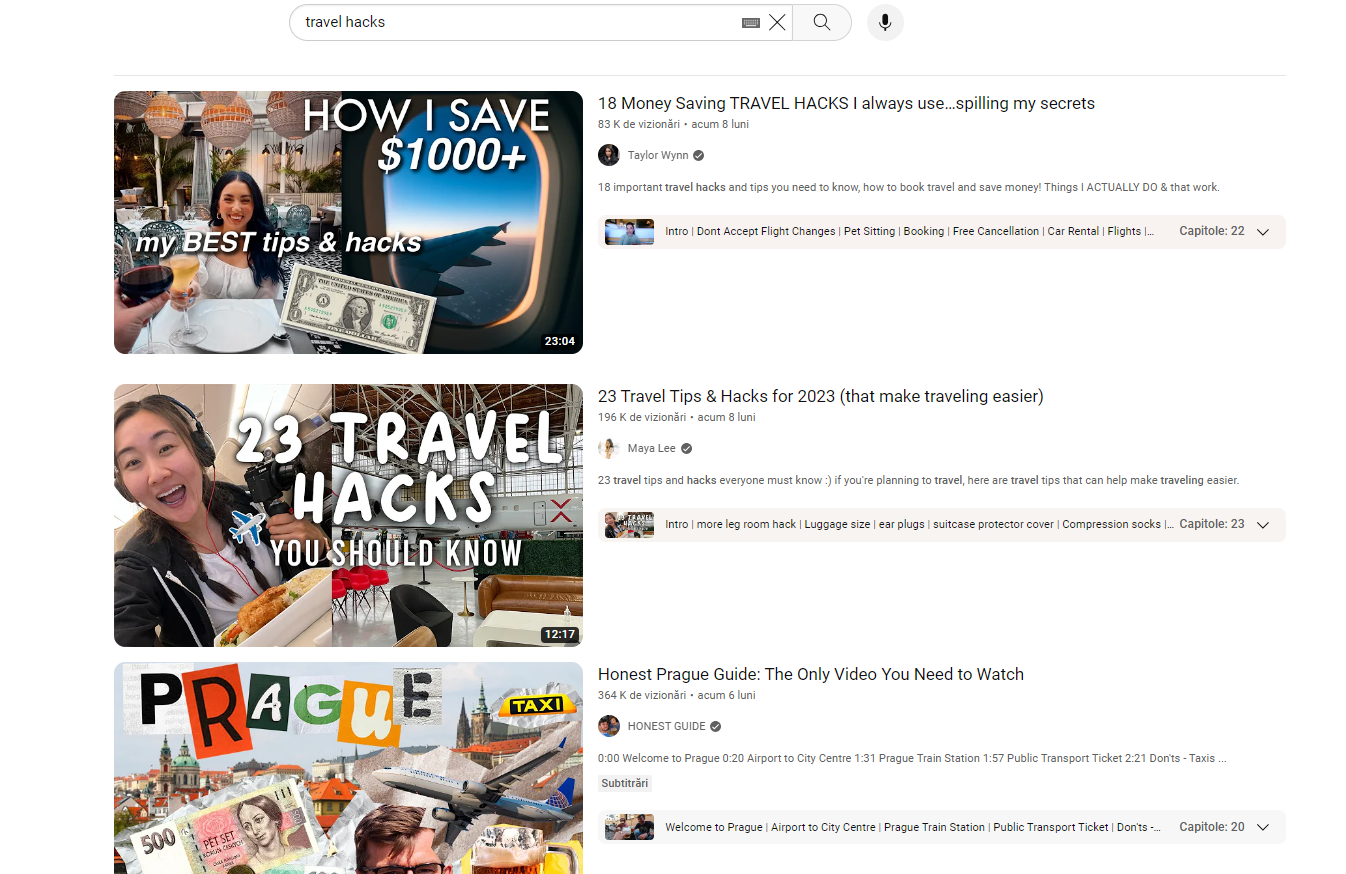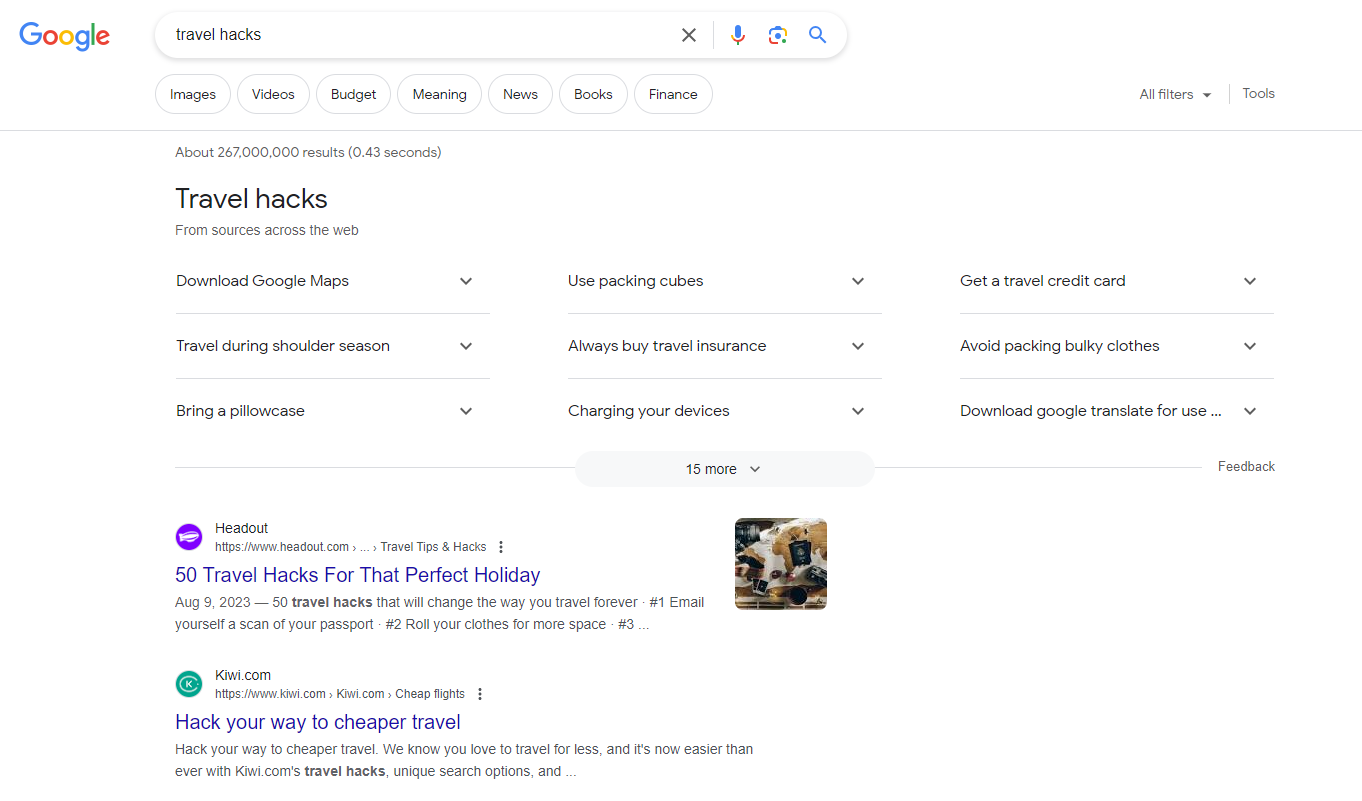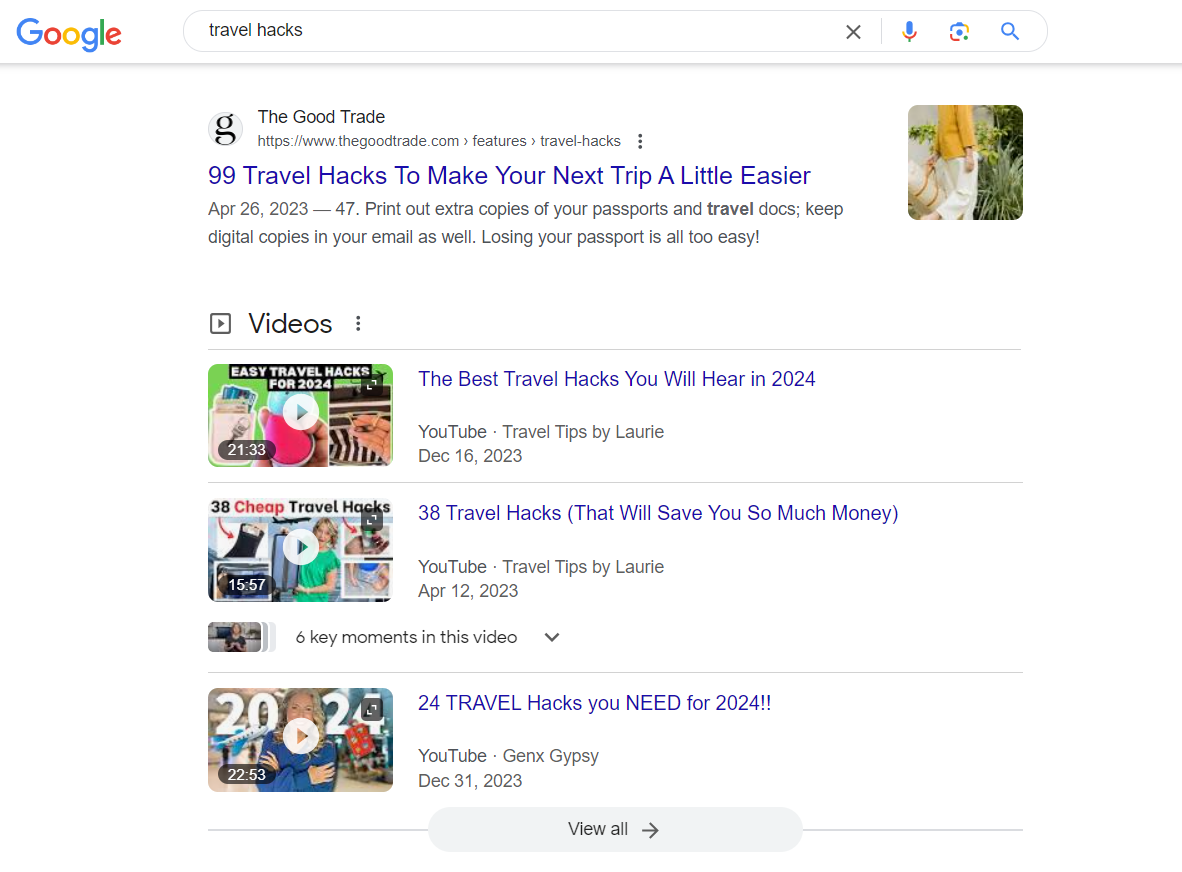

YouTube SEO: 4 Tips to Optimise Your Videos for YouTube Search
Written By Otilia Crizbasan | 20 March, 2024
Master video optimisation to win at search
If you’re looking to connect with your audience, YouTube is a great place to be.
That’s why getting seen on this platform is incredibly important.
Luckily, optimising your videos isn’t as complicated as it seems. Actually, if you’ve already been working on SEO for your website, you’ll find YouTube’s SEO is pretty similar, while still having its unique aspects.
In this article, we’ll explain the basics of YouTube SEO and then explore how you can dominate the search space of this platform.
What is YouTube SEO?
The aim of YouTube SEO is to optimise your YouTube videos so they rank better in the platform’s search results. This process can help you attract more views, leading to a larger subscriber community for the channel and driving increased traffic to your website.
By using this tactic, you’ll be able to ensure users can easily find your content, as you can see in the example below for ‘travel hacks’:

Another thing you should know is that YouTube SEO is a subset of SEO, which means driving organic traffic from search engines. So if you’re searching on Google the same as you did in the image above, you’ll get this result:

And if you’re looking even further on the Google result page for the same term, you’ll notice that Youtube videos are now displayed as search results. That’s because Google knows that users like visual content and they are looking to videos to answer the questions they have.

Why is YouTube SEO important?
In 2024, with 2.70 billion people using YouTube and about 113 billion visits every month, it’s essential that brands use YouTube SEO in their search strategies.
Here’s why we think YouTube SEO is a game changer:
- More chances to make an impact: Being more visible means more people can watch, share, and interact with your videos. This can also mean more subscribers and more revenue for you.
- Drive traffic to your website: When your videos are easy to find, more people might click through to your website. This can make your brand more popular and bring more visitors to your site from YouTube.
- It’s cost-effective: Working on Youtube SEO requires your time, but spending on tools and software is optional.
- Stay ahead of the curve: If your videos rank high on YouTube, you’re already ahead of your competitors. This can make you stand out as a leader in your field.
What are YouTube’s ranking factors?
People around the world watch 1 billion hours of videos on YouTube everyday. To handle all this data, YouTube uses a complex algorithm to decide which videos show up when you search for something.
It doesn’t just show you the newest or the ones with the most views. Instead, it aims to determine what you’d really like to see. Because of this, if two people search for the same thing, they might see totally different videos.
Hootsuite says YouTube looks at a few important things to decide which videos to show you:
- Relevance: the YouTube algorithm looks for a match between your search terms and various elements of the video such as its title, tags, content, and description.
- Engagement: This includes metrics such as the duration of watch time, the percentage of the video watched, and user interactions like likes, comments, and shares.
- Quality: The algorithm assesses quality by examining signals that suggest a channel’s authority and credibility on the subject.
- User history: Users’ past search and viewing habits also play a crucial role, influencing the results that the algorithm predicts will be most useful to you.
4 Youtube SEO tips for better reach
- Do your keyword research
The first tip for getting your videos noticed is to think about keywords. This is a crucial step in YouTube SEO.
Choosing a good keyword for each video can make a big difference in helping people find your content. Just like when you use Google to find something, YouTube tries to show the best and most relevant videos when someone searches for something.
Here are some popular keyword research tools to help you find the most popular search terms to use for YouTube SEO:
If you search for ‘travel hacks’ on keywordtool.io, you’ll get various keyword suggestions, as well as their search volume and their evolution:

After using one of the tools mentioned, choose some popular keywords that fit your video topic and note them. Then, keep reading our next tips to find out how to use those keywords to climb the rankings.
- Create relevant and engaging titles
Adding your main keyword in the title is a great first step. But you need more than that to really stand out on YouTube.
Your title needs to grab people’s attention and make them want to watch your video. The best videos don’t just use the keyword; they add something extra to make their title more engaging.
Just calling your video “travel hacks” isn’t enough. You have to go further. Tell your audience exactly what they’ll learn or give them a sneak peek of something really interesting you’re going to show them.
Take the one below as an example. If your title makes people curious, they’re more likely to click on your video.
Plus, if YouTube sees that more people are clicking on your video because it looks like it’ll answer their questions, your video could show up even higher in search results. Make sure to clearly explain what your video is about, whether you’re teaching something or just entertaining viewers.
- Write effective descriptions
The title is what makes people notice your video, but the description lets you explain more.
YouTube shows the first 200 characters of your description. So try to use your most important keywords early on in the description.
However, remember you’re writing for real people, not just the YouTube search algorithm. Keeping your viewers interested is crucial; don’t just write to game the system.
Here are some quick tips for your video descriptions:
- Add video descriptions that include your keywords to all your videos.
- Make sure your description is original – don’t just copy and paste from your website or anywhere else.
- Add a link to your website to take viewers there for more info.
A clear and optimised description helps YouTube understand what your video is about, ensuring it is seen by the right people.
- Add the right tags
You’ve got your keywords in your title and description? That’s great! But remember to also add them into the ‘tags’ area. YouTube pays close attention to the first few tags assigned to a video when deciding whether to show them in search results.
Your audience won’t see these tags. They’re mainly for YouTube to understand what your video is actually about.
Feel free to mix in as many variations of your keywords and related phrases as you can think of.
Taking “travel hacks” as an example, you could use a bunch of different tags, depending on the topic of your video:
- Travel tips
- Travel guide
- Destination Guides
- Budget Travel
- Packing Hacks
- Travel Essentials
- Airport Hacks
Don’t worry about making your tags super precise.
And to make the most out of this, take a look at VidIQ. This is another tool that lets you peek at what tags your competition is using.
Final thoughts
If you already have something unique, and if you go the extra mile to optimise your videos for YouTube SEO, you can become very successful in this space.
The large number of daily YouTube users creates a competitive environment for brands that want to create content. But remember — the competition is manageable when choosing the right strategy to improve your YouTube SEO.
Get in touch to discover how we can help you own the search space on Youtube and other emerging channels.





